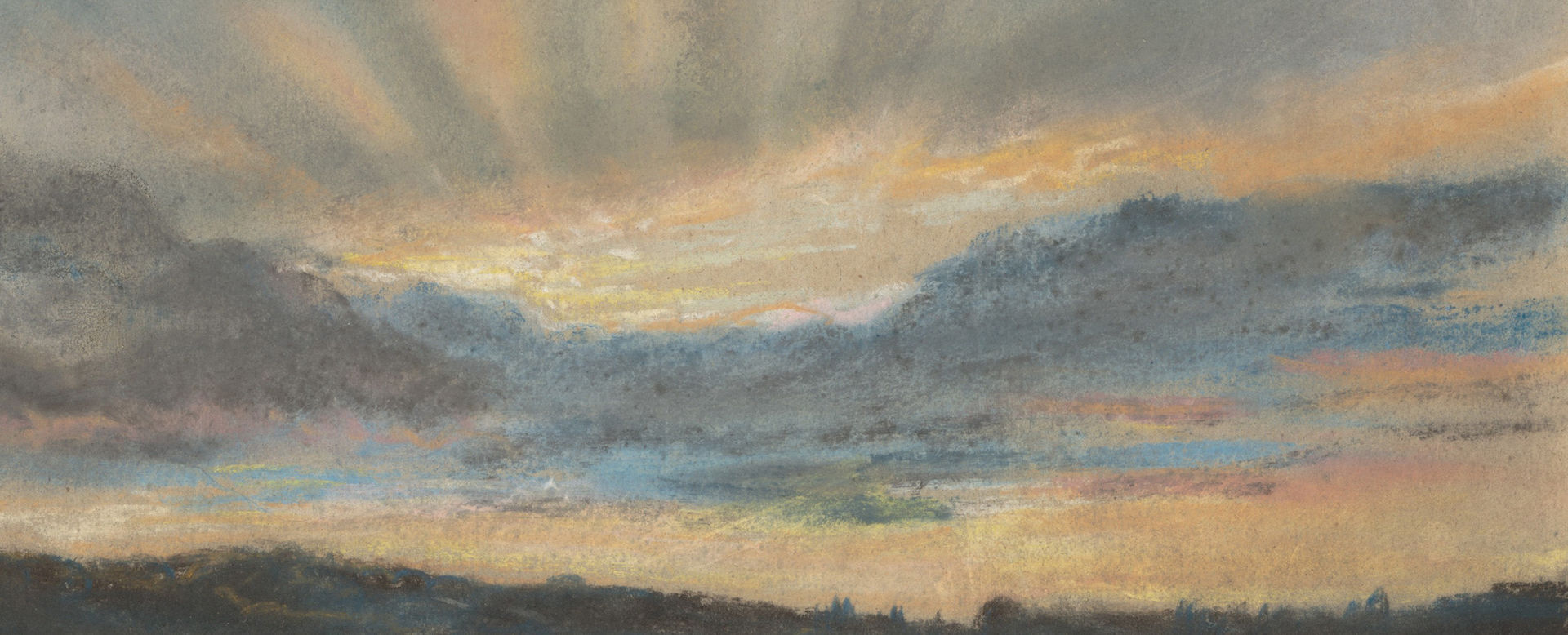A French Dragoon, Study for "The Revolt of Cairo"
Anne Louis Girodet-Trioson French
Not on view
This pastel study of a French dragoon (a military officer) is a study for one of Girodet's most famous paintings, The Revolt of Cairo commissioned by Napoleon in 1809 for the Galerie de Diane in the Tuileries Palace, the canvas is today at the Château de Versailles.
The painting commemorates the Napoleonic army’s suppression of an uprising in Cairo following the French invasion and occupation of the city in 1798. Although accounts of the rebellion differ, we know that several hundred French soldiers and several thousand Egyptians lost their lives in the pitched battle that took place inside the Al-Azhar mosque. The subject is unusual for a Napoleonic battle scene in that it features no heroes or identifiable individuals. Girodet was not present and was given no documentary account or images to guide his preparation. His drawings were based on French uniforms and Mamluk costumes he could have seen in Paris, but the specifics of the dramatic carnage depicted were born of his fertile imagination.
The composition is built around the foreground figures of a charging blond hussar on the left and a fierce nude Moorish enslaved servant on the right preparing to defend the collapsed figure of the wounded Mamluk bey, apparently dying in his arms. For this important commission, Girodet made more studies than for any other in his career. The drawings reveal Girodet as fascinated with the details of costume (both French and foreign) while at the same time using the studies to create in the painting an impossibly dense scene of gory mayhem.
In this study, a French cavalry soldier lunges forward with his sword extended. He is identified as a dragoon by his brass helmet with faux leopard pelt. His uniform, in the colors of the French Republic, is embellished with a black mane and red plume on the helmet, white aiguillettes on his shoulder, and brightly colored coat-tails with contrasting piping, all rippling back to the left, suggesting forward motion.
The pastel is executed in vivid hothouse colors on a gold-tinted paper. The speed of execution and the attention to the classical beauty of the figure and the sumptuous tactile quality of the costume all anticipate the compelling and disturbing pairing of violence and beauty in the finished canvas. Ultimately, The Revolt of Cairo should be seen in the context of both Napoleonic battle painting and early Orientalism.
Perrin Stein (March, 2018)
Due to rights restrictions, this image cannot be enlarged, viewed at full screen, or downloaded.



